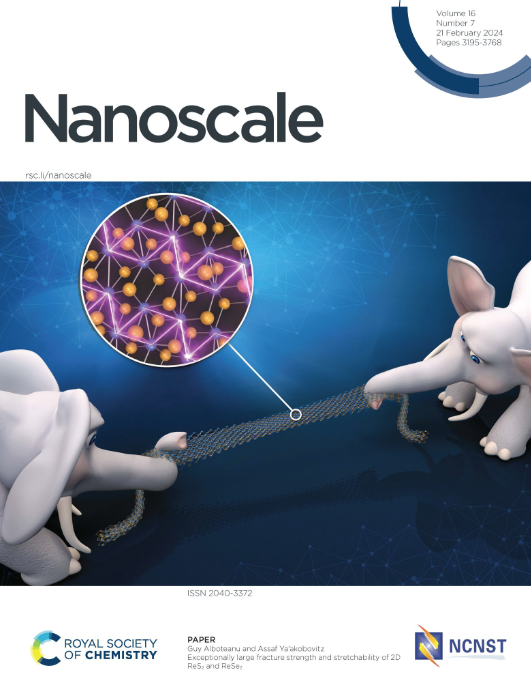二维A2B2Te6 (A = Sb, Bi)中的Rashba效应调制B = Si, Ge)材料通过电荷转移
IF 5.8
3区 材料科学
Q1 CHEMISTRY, MULTIDISCIPLINARY
引用次数: 0
摘要
设计二维Rashba半导体,探索Rashba效应的潜在机制,并进一步提出有效和可控的方法对自旋电子学的发展至关重要。在第一性原理计算的基础上,我们从理论上设计了所有可能的Janus结构类型(典型,逆和复合),并成功地从一系列五个原子层A2B2Te6 (a = Sb, Bi;B = Si, Ge)材料。考虑到不同的Rashba常数αR及其在外加电场作用下的调制趋势,我们从功函数、静电势、偶极矩和内部电荷转移等方面综合分析了本征电场Ein。受电荷转移与Ein甚至αR强度之间的定量关系的启发,我们提出了一种简单的策略,即在二维单层膜表面引入单个adatom来引入和调节Rashba效应。最后,我们还研究了Janus Sb2Ge2Se3Te3体系和Janus吸附体系在二维BN衬底上的生长可行性和电子结构。我们的工作不仅对基于a2b2te6的Rashba系统进行了详细的分析,而且提出了一种通过电荷转移重构高效可控地调制αR的新策略。本文章由计算机程序翻译,如有差异,请以英文原文为准。
Rashba effect modulation in two-dimensional A2B2Te6 (A = Sb, Bi; B = Si, Ge) materials via charge transfer
Designing two-dimensional (2D) Rashba semiconductors, exploring the underlying mechanism of Rashba effect, and further proposing efficient and controllable approaches are crucial for the development of spintronics. On the basis of first-principles calculations, we here theoretically design all possible types (typical, inverse, and composite) of Janus structures and successfully achieve numerous ideal 2D Rashba semiconductors from a series of five atomic-layer A2B2Te6 (A = Sb, Bi; B = Si, Ge)materials. Considering the different Rashba constant αR and its modulation trend under external electric field, we comprehensively analyze the intrinsic electric field Ein in terms of work function, electrostatic potential, dipole moment, and inner charge transfer. Inspired by the quantitative relationship between charge transfer and the strength of Ein and even the αR, we propose a straightforward strategy of introducing a single adatom onto the surface of 2D monolayer to introduce and modulate the Rashba effect. Lastly, we also examine the growth feasibility and electronic structures of the Janus Sb2Ge2Se3Te3 system and Janus-adsorbed systems on a 2D BN substrate. Our work not only conducts a detailed analysis of A2B2Te6-based Rashba systems, but also proposes a new strategy for efficiently and controllably modulating the αR through the reconfiguration of charge transfer.
求助全文
通过发布文献求助,成功后即可免费获取论文全文。
去求助
来源期刊

Nanoscale
CHEMISTRY, MULTIDISCIPLINARY-NANOSCIENCE & NANOTECHNOLOGY
CiteScore
12.10
自引率
3.00%
发文量
1628
审稿时长
1.6 months
期刊介绍:
Nanoscale is a high-impact international journal, publishing high-quality research across nanoscience and nanotechnology. Nanoscale publishes a full mix of research articles on experimental and theoretical work, including reviews, communications, and full papers.Highly interdisciplinary, this journal appeals to scientists, researchers and professionals interested in nanoscience and nanotechnology, quantum materials and quantum technology, including the areas of physics, chemistry, biology, medicine, materials, energy/environment, information technology, detection science, healthcare and drug discovery, and electronics.
 求助内容:
求助内容: 应助结果提醒方式:
应助结果提醒方式:


